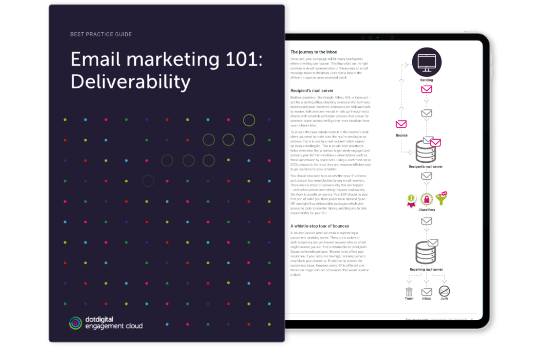

Email deliverability: make holiday sending about consent, not spam

Set expectations with contacts to maximize email deliverability and avoid exile to the spam folder.
We’ve previously talked about how communicating to everyone in your lists needs to be done strategically, and that email may not be the best path. One of the seasons where senders feel pressure to expand their email audience is fast approaching.
Sometimes that pressure focuses on legal arguments. When having conversations about email deliverability, and specifically when I’m giving advice on who to send to, I frequently get the response: ”but it’s legal”. Just because you can send to all, doesn’t mean you should.
Mailbox providers don’t consider legality when they’re deciding whether or not your email belongs in the inbox. Their priority is to deliver wanted mail to their users, and so the critical art of deliverability is all about meeting recipient expectations to achieve great inbox placement.
If your sole priority is legality, you’re taking the whole focus away from what the email deliverability conversation should really be about.
Email deliverability: Wanted vs. unwanted
The core of the conversation should be: do the recipients of the emails you’re sending want to receive those emails?
Consent and setting expectations are both key to having a successful, revenue-generating email program. As we come up to the busy holiday period, it’s easy to let the pressures that come with it change this key part of the message. But there are no exceptions because of timing.
Mailbox providers have a job to do: make sure that the emails being sent to recipients are wanted. They measure whether or not an email is wanted through many different indicators. Some thresholds they’ll be measuring include:
- proportion of recipients deleting emails without reading them
- recipients actively marking messages as spam
- sending to an email address that’s being used to identify senders collecting email addresses without consent or continued consent (a.k.a ‘spam trap’)
- sending to recipients that no longer exist at that mailbox provider
Once you reach one or more of those thresholds, mailbox providers (such as Gmail and Yahoo) can see clearly that you’re sending emails that their users do not want. This leads to emails being more likely to hit the spam folder – even for fans of your messages.
If your biggest argument for sending an email is, “oh, but it’s legal”, then you need to re-focus. You run the risk of alienating people who actually do want to hear from you. These are the contacts that drive revenue or any other intended outcome of your email program.
Build a robust sending plan
Repairing your reputation is hard; it’s better to build your sending plan for the busy upcoming holidays in a way that protects your reputation while maximizing revenue. Here are some email deliverability tips:
- If there is consent and data to show a larger audience wants to hear about your holiday deals, then plan any volume increases accordingly – slowly build to the volumes where you need to be.
- Use previous years’ data to understand how your recipients interact with your emails. Look at the demographics of your recipient base and what they want to know.
- Don’t discount any changes or trends seen since the last holiday season. How your recipients interacted last Black Friday, for example, may not be how they respond this year (recession, anyone?) (there is a recession after all).
- Consider carefully before sending to inactive contacts who may still be opted in. Sending to this kind of data presents a higher risk of negative outcomes and you will need to balance this against the potential reward.
- Basic advice: send less frequently to contacts who have not engaged with your brand for a while. Sending to highly engaged recipients acts as a buffer to a certain extent when it comes to your reputation and inbox placement. Tolerance for sending to less engaged recipients will vary between senders and mailbox providers.
- To level up: find the data point where revenue or other KPIs drop when charted against date of the last interaction. At what age of inactivity does the lack of revenue make sending to that data set irrelevant compared to the risk? Remember, the answer to this question will be different for each sender.
Who should I be sending to?
Want to have a conversation about who to send to or how to reduce risk to your email deliverability and improve the success of your email marketing during the busy festive period? Get in touch with your account manager to set up a consultation.
Contents
Tanya Plaza

Email marketing 101: Deliverability
Get your copy of our 5-step checklist to help you crack email deliverability once and for all.
Get your copyStay on top
Get the latest and greatest marketing insight delivered to you weekly
Your email address will be handled in accordance with our Privacy Policy. We gather data around email opens & clicks using standard technologies including clear gifs to help us monitor and improve our newsletter.

